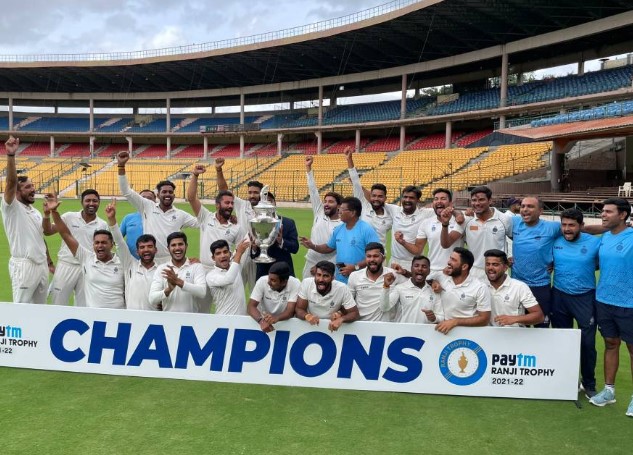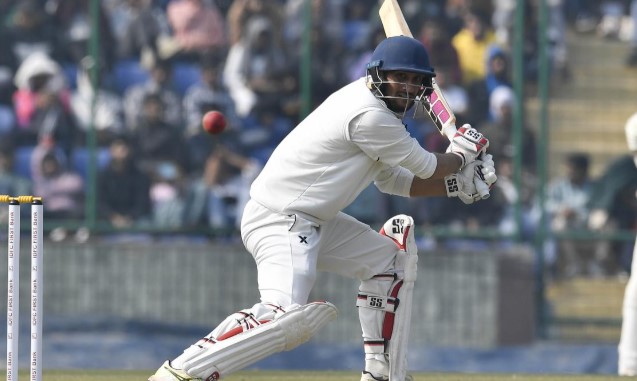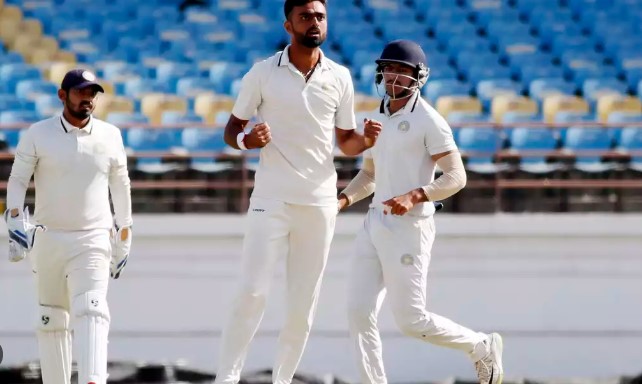In the world of Indian cricket, the Ranji Trophy and the Indian Premier League (IPL) are two of the most significant platforms for cricketers to showcase their talent, but they serve very different purposes. The Ranji Trophy is India’s premier domestic first-class cricket competition, while the IPL is a short-form, franchise-based tournament, revolutionizing the way cricket is played and perceived in the country.
While both tournaments offer opportunities for players to shine and gain recognition, there are stark differences between the cricketers who participate in these two formats. This article aims to delve into the fundamental differences between a Ranji Trophy player and an Indian Premier League player, shedding light on their roles, the nature of the tournaments, and how they fit into the wider cricketing ecosystem.
1. Format And Structure Of The Tournaments

Ranji Trophy: A Traditional First-Class Tournament
The Ranji Trophy is a first-class cricket competition that operates under the purview of the Board of Control for Cricket in India (BCCI). The tournament was established in 1934 and is named after Ranjitsinhji, an Indian prince and famous cricketer. It follows the traditional format of first-class cricket, where teams compete over four days (with a possible fifth day in some cases). The Ranji Trophy is primarily about building a player’s technical skills, endurance, and concentration, as it involves long, grueling matches over multiple days.
Key characteristics:
- Length: Matches last up to 5 days.
- Team Composition: Teams consist of 15-16 players representing various Indian states.
- Role: Primarily a developmental tournament for cricketers looking to play for the national team.
- Playing Conditions: Matches are played on a variety of pitches, including spin-friendly, pace-friendly, or flat pitches, which demand a broader skill set from players.
- Player Profile: Most of the players are traditional cricketers who focus on technique, temperament, and playing long innings.
IPL: A Fast-Paced Franchise League
The Indian Premier League, launched in 2008, is a franchise-based T20 cricket league that has revolutionized the sport with its fast-paced, exciting format. The IPL features teams that represent various cities in India, and it attracts top domestic and international players. Unlike the Ranji Trophy, IPL matches last for only 3-4 hours, making them shorter and far more intense.
Key characteristics:
- Length: Matches last for 3-4 hours, usually in a T20 format.
- Team Composition: Teams are composed of domestic and international players, with each team having a squad size of about 20 players.
- Role: The IPL is designed to promote entertainment, and it focuses on T20 cricket, which emphasizes aggressive batting, innovative strategies, and high-paced bowling.
- Playing Conditions: The matches are typically played in well-maintained, batter-friendly pitches in stadiums across the country.
- Player Profile: IPL players are often aggressive hitters, boundary scorers, and bowlers who can bowl in the death overs, with a strong emphasis on adaptability to fast-paced, high-pressure environments.
2. Player Selection And Scouting Process

Ranji Trophy Player Selection
The selection of players for the Ranji Trophy primarily depends on their performances in domestic cricket and their ability to showcase consistency and form over a long duration. Players are selected by state associations based on their performances in local leagues, age-group cricket, and other domestic tournaments. The Ranji Trophy is considered the backbone of India’s domestic cricket structure.
Key Points of Selection:
- Talent Identification: Players are often identified from lower levels of domestic cricket and local competitions.
- Domestic Competitions: Players must perform well in local, age-group, and state-level tournaments to get selected.
- Consistency: A Ranji player is usually someone who has proven his consistency in longer formats.
Indian Premier League Player Selection
The selection of players for the IPL is different. The tournament holds an annual IPL Auction where franchises bid for players based on their skills, experience, and marketability. International and domestic cricketers are eligible to be selected for the auction, and the bids can sometimes run into millions of dollars for top-tier players.
Key Points of Selection:
- Auction-Based: Players are purchased by franchises through an auction process.
- International Stars: The IPL is a platform where top international cricketers often feature prominently, alongside talented domestic players.
- Explosive Talent: Players with explosive T20 performances in international cricket or other T20 leagues are often targeted.
3. Format Of Cricket Played

Ranji Trophy: Longer Format, Technical Mastery
The format of the Ranji Trophy focuses heavily on test-match style cricket, where players are required to show their skills over a period of time. Batting in the Ranji Trophy requires players to be technically sound and have the ability to play long innings under pressure. Bowlers need stamina and patience to bowl for long spells, and fielding demands consistent effort throughout the day.
- Batting: Focus is on building innings, playing with patience, and managing the wear and tear of the pitch.
- Bowling: Bowlers have to focus on consistency, swing, and patience.
- Fielding: Players focus on building partnerships and maintaining consistency.
IPL: Fast-Paced, Aggressive, and Innovative
On the other hand, the IPL is all about quick runs, aggressive bowling, and innovation. Players in the IPL are expected to perform under extreme pressure, delivering quick results. Batters often go for boundaries and sixes right from the start, and bowlers have to deliver in the death overs. The key is adaptability and high-impact performances.
- Batting: Focus is on aggressive, boundary-hitting techniques and innovative shots.
- Bowling: Focus is on pace, yorkers, slower deliveries, and deception in the death overs.
- Fielding: Players must be quick and agile to stop boundaries and perform in pressure situations.
4. Financials And Fame
Ranji Trophy Player
While playing in the Ranji Trophy provides an opportunity for cricketers to make a mark and potentially get into the Indian national team, it doesn’t guarantee huge financial rewards. The BCCI pays domestic players a salary, but it’s not as lucrative as IPL contracts. Ranji players typically earn more through sponsorships, match fees, and performance-based bonuses.
- Income: Lower than IPL players, often based on state contracts and match performance.
- Exposure: Limited exposure compared to IPL players.
- Long-Term Benefits: The Ranji Trophy is more about career development, and many Ranji players aim to transition to international cricket.
IPL Player
The IPL offers substantial financial rewards. Players who are selected for the IPL can earn multimillion-dollar contracts, depending on their popularity and performances. Stars like Virat Kohli, MS Dhoni, and Rohit Sharma have built massive fan bases and earned substantial sums through the IPL.
- Income: IPL players earn millions of dollars through contracts, endorsements, and sponsorships.
- Exposure: IPL players enjoy global recognition and can build a strong brand.
- Short-Term vs. Long-Term: While the IPL can bring immense short-term financial rewards, the career longevity depends on performances.
5. International Opportunities

Ranji Trophy Player
Players in the Ranji Trophy primarily focus on playing for the national team. Many cricketers use the Ranji Trophy as a stepping stone to get selected for the Indian national cricket team. Success in the Ranji Trophy can help a player break into the Indian Test, ODI, or T20 squads.
IPL Player
Although some IPL players have represented India in international cricket, many are limited to playing in the IPL. The nature of T20 cricket means that only a select few can transition into international cricket, and even then, it’s often the top performers in the IPL who get a chance to represent the national team.
In conclusion, a Ranji Trophy player and an IPL player are both integral to Indian cricket, but they play in completely different ecosystems. While the Ranji Trophy is centered on developing skills for long-format cricket, with a focus on technique, endurance, and consistency, the IPL emphasizes short-form, high-impact cricket with aggressive playing styles. Both tournaments provide distinct paths for cricketers, and while many successful IPL players have come through the ranks of the Ranji Trophy, the two formats serve different purposes in the broader landscape of Indian cricket.
Key Differences Between Ranji Trophy And IPL Players
| Feature | Ranji Trophy Player | IPL Player |
|---|---|---|
| Format | First-Class (4-5 Days) | T20 (3-4 Hours) |
| Focus | Technique, Consistency, Endurance | Aggression, Innovation, Impact |
| Player Selection | State-based, Domestic Performance | Auction-Based, International & Domestic Stars |
| Income | Relatively Lower | High Earnings from Contracts and Endorsements |
| Exposure | Limited to Domestic Cricket | Global Recognition, Media Attention |
| Player Role | Future National Team Player | Short-Term Impact Player, National Team Aspirant |
| Skills Required | Long Innings, Patience, Stamina | Aggressive Batting, Death Over Bowling |
| Cricketing Experience | Traditional, Focus on Test Matches | High-Pressure, Fast-Paced T20 Format |
This table highlights the fundamental contrasts in terms of format, player selection, and income, helping one understand the distinct roles these players play in Indian cricket.
